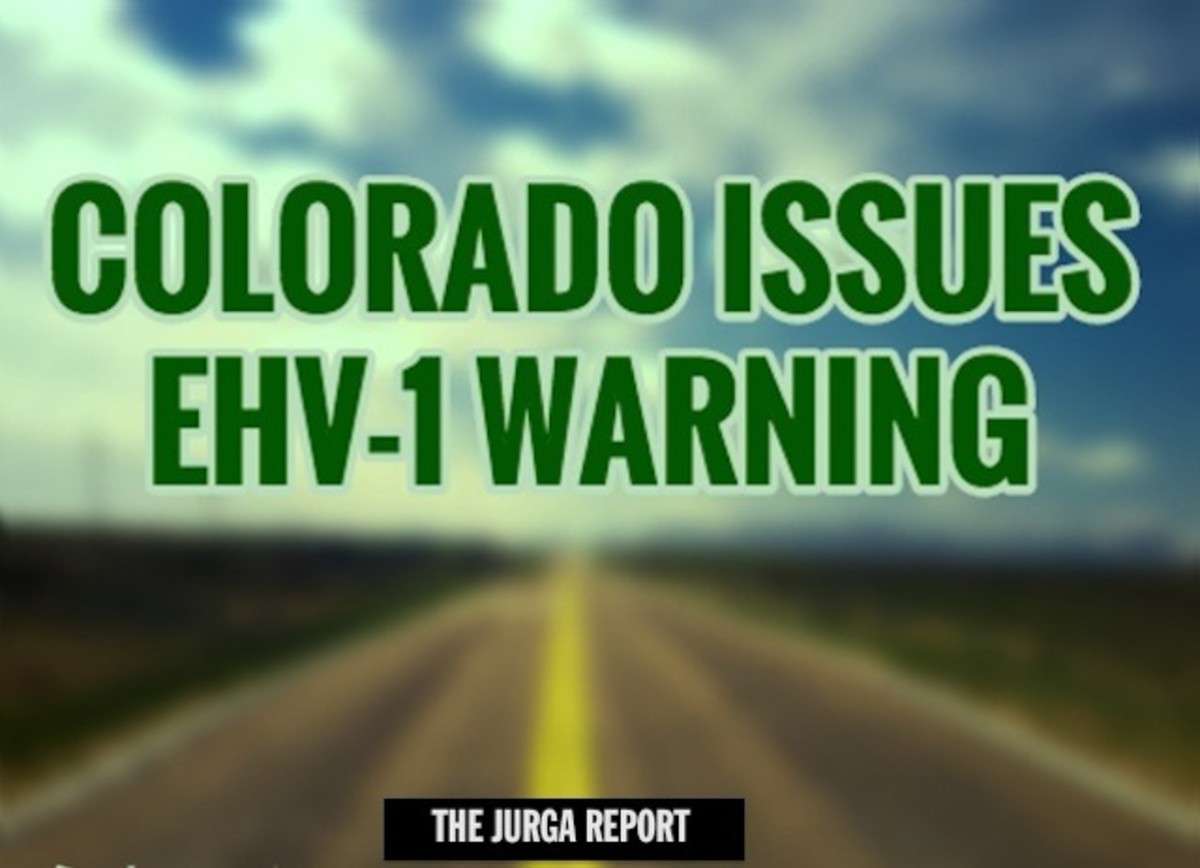
An official announcement from the state of Colorado:
The state veterinarian’s office in Colorado is investigating a horse that is exhibiting signs consistent with the neurologic form of Equine Herpes Myeloencephalitis (EHV-1). Diagnostic samples are in route to Colorado State University.
“As soon as the EHV-1 test results are known we will provide updated information. The Department is responding quickly to investigate, control and mitigate this possible disease,” said State Veterinarian, Dr. Keith Roehr. “We will continue to trace the potential contacts of this horse in order to protect Colorado’s equine population.”
The horse and its stable-mates have a history of travelling to events within Colorado over the last few weeks and there is a potential link to other horses that have attended the National High School Rodeo and Colorado Junior Rodeo Association events located in:
- Henderson (April 26-27)
- Eagle (May 2-4)
- Rocky Ford (May 10-11)
The Colorado State Veterinarian’s office is in the process of contacting all Colorado contestants that were involved in these events.
“At this point, we have no knowledge of any other horses displaying signs consistent with EHV-1,” said Roehr. “The most common way for EHV-1 to spread is by direct horse-to-horse contactbut it can also spread through the air, contaminated equipment, clothing and hands; this certainly highlights the importance of following basic biosecurity practices.”
Important recommendations if your horse attended any of the above events or has a direct link to a horse that attended one of these events:
- Monitor its temperature twice daily and report temperatures greater than 101.5 F to your veterinarian.
- Isolate your horse from others if possible for 21 days past the event.
- Contact your veterinarian if your horse is showing other signs of illness or if you have concerns about its health.
- Limit horse-to-horse contact at equine events.
EHV-1 can by spread on tack, grooming equipment, feed/water buckets, and people’s hands or clothing. Do not share among horses or clean properly between use.
Symptoms include fever, decreased coordination, nasal discharge, urine dribbling, loss of tail tone, hind limb weakness, leaning against a wall or fence to maintain balance, lethargy, and the inability to rise.
While there is no cure, the symptoms of the disease may be treatable. EHV-1 is not transmissible to people; it can be a serious disease of horses that can cause respiratory, neurologic disease and death.
Additional Resources:
A Guide to Understanding the Neurologic Form of EHV Infection
Biosecurity-The Key to Keeping Your Horses Healthy:
For more information in Colorado, visit Colorado Department of Agriculture Animal Health and click on “Animal Health.”








